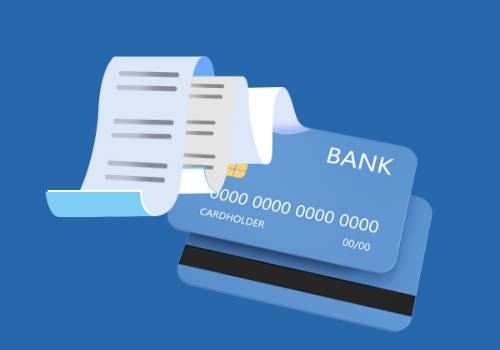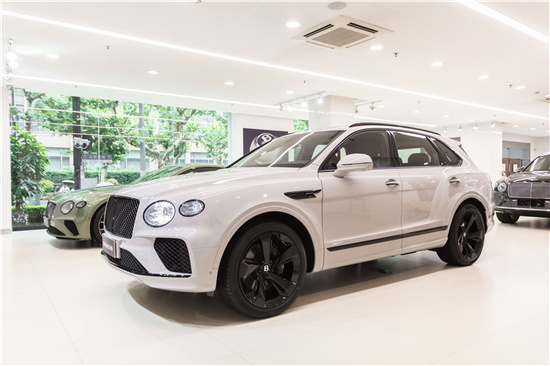Iceland (Icelandic, Ísland), island republic, in the North Atlantic Ocean, about 300 km (about 185 mi) east of Greenland and about 1,000 km (about 620 mi) west of Norway. The country’s extreme dimensions are about 305 km (about 190 mi) from north to south and about 485 km (about 300 mi) from east to west. Iceland has an area of 103,000 sq km (39,800 sq mi).
 (资料图)
(资料图)
II LAND AND RESOURCES
In shape Iceland is generally elliptic, and the coastline, with a total length of 4,990 km (3,100 mi), is deeply indented, especially in the west and north. Important embayments on the West Coast are Faxaflói (bay) and Breiðafjörður (fjord). Projecting northwest between the latter and Húnaflói (bay), one of the major indentations on the northern coast, is an irregularly formed peninsula fringed by precipitous cliffs. The peninsular coastline makes up about 30 percent of the total for the island. Volcanic in origin, Iceland consists predominantly of uninhabitable lava tablelands with mountainous outcroppings; the lowlands, situated mainly along the southwestern coast, occupy about 25 percent of the total area. The bulk of the Icelandic population lives along the coast, particularly in the southwest.
Elevations in the uplands average between about 610 and 915 m (about 2,000 and 3,000 ft). Hvannadalshnúkur (2,119 m/6,952 ft), in the southeast, is the highest summit. Nearly 15 percent of the surface of the island is covered by snowfields and glaciers. Vatnajökull, a glacier in the southeast, has an area of 8,456 sq km (3,265 sq mi). The island has more than 120 glaciers and numerous small lakes and swift-flowing rivers.
Iceland is remarkable for the number of its volcanoes, craters, and thermal springs and for the frequency of its earthquakes. More than 100 volcanoes, including at least 25 that have erupted in historic times, are situated on the island. Noteworthy among the volcanoes are Hekla (1,491 m/4,892 ft), which has erupted many times, including in 1766, 1947, and 1980, and nearby Laki, with about 100 separate craters. Vast lava fields have been created by volcanoes, and many eruptions have caused widespread devastation. In 1783, when the only known eruption of Laki occurred, molten lava, volcanic ashes and gases, and torrential floods resulting from melting ice and snow led to the deaths of more than 9,000 people, ruined large tracts of arable land, and destroyed about 80 percent of the livestock on the island. In 1963 an ocean-floor volcano erupted off the southwestern coast of Iceland, creating Surtsey Island. In 1973 a volcano on Heimaey Island became active, forcing the evacuation of the island’s main town, Vestmannaeyjar.
Thermal springs are common in Iceland. Particularly numerous in the volcanic areas, the springs occur as geysers, as boiling mud lakes, and in various other forms. Geysir, generally regarded as the most spectacular, erupts at irregular intervals (usually from 5 to 36 hr), ejecting a column of boiling water up to about 60 m (about 200 ft) in height. Most homes and industrial establishments in the Reykjavík area are heated by water piped from nearby hot springs.
A Climate
Iceland has a relatively mild and equable climate, despite its high altitude and its proximity to the Arctic. Because of oceanic influences, notably the North Atlantic Drift (a continuation of the Gulf Stream), climatic conditions are moderate in all sections of the island. The mean annual temperature at Reykjavík is about 5° C (about 41° F), with a range from -1° C (31° F) in January to 11° C (52° F) in July. In the northwestern, northern, and eastern coastal regions, subject to the effects of polar currents and drifting ice, temperatures are generally lower. Windstorms of considerable violence are characteristic during much of the winter season. Annual precipitation ranges between about 1,270 and 2,030 mm (about 50 and 80 in) along the southern coast, and is only about 510 mm (about 20 in) along the northern coast. The southern slopes of some of Iceland’s interior mountains receive up to about 4,570 mm (about 180 in) of moisture per year.
B Plants and Animals
The vegetation of Iceland is of the arctic European type. Grass and heather are abundant along the southern coast and afford pasturage for sheep and other livestock. Extensive forests probably existed on the island in prehistoric times, but present-day trees, such as birch and spruce, are relatively scarce. Bilberries and crowberries are the only kinds of fruit that grow on the island. The arctic fox was probably living in Iceland at the time of the first human settlement. Reindeer were introduced about 1770; rodents were brought in on ships. Neither reptiles nor frogs and toads are found. About 100 species of birds inhabit the island; many of these species are aquatic, among them the whistling swan and several kinds of duck. The eider duck is valued for its down. Whales and seals live along the coast, as do cod, haddock, halibut, and herring. Many salmon and trout inhabit Iceland’s freshwater rivers and lakes.
III POPULATION
The population of Iceland is extremely homogeneous, being almost entirely of Scandinavian and Celtic origin. Beginning in the 1940s a large-scale movement to the coastal towns and villages has occurred. Some 92 percent of the people now live in cities and towns. The population of Iceland (2002 estimate) is 279,384. The overall population density is 2.7 persons per sq km (7 per sq mi).
A Political Divisions and Principal Cities
Iceland is divided into eight regions, each with its own administrative center. Reykjavík (population, 1998 estimate, 108,351) is the capital and chief port. Other towns are Akureyri (15,102), on the northern coast; Kópavogur (21,370), Hafnarfjörður (18,600), and Keflavík (7,637), on the western coast near Reykjavík; and Vestmannaeyjar (4,640), on the tiny island of Heimaey off the southern coast.
B Religion and Language
The state church of Iceland is the Evangelical Lutheran church, with which about 90 percent of the people are affiliated. Complete religious freedom exists, however. Free Lutherans and Roman Catholics make up a small minority. The language is Icelandic, which has remained closer to the Old Norse of Iceland’s original Viking settlers than to the other Scandinavian languages. See Icelandic Language; Icelandic Literature.
C Education
Literacy in Iceland approaches 100 percent of the adult population. Education is free through the university level and is compulsory for all children between the ages of 6 and 16. In the 1998-1999 school year 30,355 pupils were enrolled in primary schools, 30,253 students attended secondary and vocational schools, and 7386 were enrolled in higher institutions. The leading institution of higher education is the University of Iceland (1911), in Reykjavík. The country also has a technical college and colleges of agriculture and music as well as teacher-training schools.
The principal libraries of Iceland are the University Library, the National Library, and the City Library, all located in Reykjavík. The capital is also the site of the Museum of Natural History; the National Museum, containing a major collection of Icelandic antiquities; and an art gallery housing the work of the Icelandic sculptor Einar Jónsson.
IV ECONOMY
Private enterprise forms the basis of the economy of Iceland, but the government exercises a considerable degree of control and supervision over key sectors. Until the close of the 19th century, agriculture was the chief occupation, with fishing as a supplementary source of income. By the middle of the 20th century, however, fishing and fish processing had become the major industries. Hydroelectric power potential is abundant and is being developed to further industrialization. In 1970 Iceland became a member of the European Free Trade Association. The national budget in 1998 included revenue of $2.4 billion and expenditure of $2.4 billion. Iceland suffered from a high rate of inflation in the late 1970s and the 1980s, but the rate decreased substantially in the early 1990s. In 2000 Iceland’s gross domestic product was $8.5 billion.
A Agriculture
Only 9 percent of Iceland’s labor force is engaged in agriculture and fishing. Only 0.07 percent of the land area is under cultivation. The principal crops are turnips and potatoes. Livestock raising is a major occupation, and considerable quantities of dairy products, wool, mutton and lamb, and chicken eggs are produced. In 2001 the country had 465,000 sheep, 72,100 cattle, and 77,330 horses.
B Fishing
Fishing and fish processing are the most important Icelandic industries, and the total catch in 1997 was 2.2 million metric tons. Food products, including fresh and processed fish, account for 70 percent of Iceland’s exports. Iceland is a leading producer of cod, and other major components of the catch include capelin, haddock, crustaceans, herring, redfish, and saithe. Coastal towns have extensive facilities for fish processing. In response to international pressure, Iceland suspended all whaling operations in 1989. However, in June 1992 Iceland withdrew from the International Whaling Commission, disputing the designation of some species of whales as endangered and claiming that certain species threatened Iceland’s commercial fish population.
C Mining
Iceland has few proven mineral resources, and profitable development has been difficult. Minerals of commercial value include pumice and diatomite.
D Manufacturing
Aside from fish processing, manufacturing is primarily for domestic consumption needs. Principal products are clothing, shoes, soaps, and chemicals. Book production is also a large trade in Iceland. Some electrical appliances are made. In addition, major plants producing aluminum (from imported bauxite) and ferrosilicon have been established to take advantage of Iceland’s energy resources.
E Energy
Hydroelectric installations produce 85 percent of Iceland’s electricity, with geothermal sources supplying the rest. Output in 1999 was 7.1 billion kilowatt hours. Hot water from springs is used for heating and in some manufacturing operations.
F Currency and Banking
The monetary unit of Iceland is the króna, consisting of 100 aurar (78.62 krónur equal U.S. $1; 2000). In 1981 the government introduced a new króna, equivalent to 100 old krónur. Currency is issued by the state-owned Central Bank (1961). Iceland has several private commercial banks.
G Foreign Trade
The yearly value of Iceland’s imports is often greater than that of its exports, although the country’s foreign trade balances occasionally. In 2000 imports cost $2.6 billion, and exports earned $1.9 billion. Major imports include refined petroleum, machinery, transportation equipment, textiles and clothing, chemicals, basic manufactures, and foodstuffs. Exports of metal and ores, including a significant amount of aluminum, account for 16 percent of total exports. The country’s main trade partners are the United Kingdom, the United States, Germany, Denmark, the Netherlands, Sweden, France, Norway, and Japan.
H Transportation and Communications
Iceland has 12,962 km (8,054 mi) of roads, which are mainly located in coastal areas. In 1999 Iceland had 546 passenger cars for every 1,000 residents. The island has no railroads or navigable rivers. The country has several seaports, including Arkanes, Keflavík, Reykjavík, and Siglufjörður. Icelandair provides domestic and international air service.
There are 3 daily newspapers published in Iceland, with a combined circulation of 145,000. Telephone and telegraph services are owned and administered by the government; the state monopoly on radio and television broadcasting ended in 1986. In 1997 the country had 950 radio receivers and 358 television sets for every 1,000 inhabitants.
V GOVERNMENT
Iceland is governed under a constitution that became effective when the country achieved full independence in 1944. Iceland has no armed forces of its own except for 120 coast guard personnel, but is a member of the North Atlantic Treaty Organization. In 1997 some 1,520 United States military personnel were stationed at Keflavík air base.
A Executive
The head of state of Iceland is a president, who is elected by universal suffrage by persons aged 18 and older to a four-year term. The president has little power, and the country’s chief executive is a prime minister, who is responsible to Parliament. The prime minister is assisted by a cabinet, which holds real executive power.
B Legislature
The legislature of Iceland is the Althing, which has met almost continually since its establishment in ad 930, and which was converted from a bicameral to a unicameral system in 1991. It has 63 members, 54 elected to four-year terms under a system of proportional representation and 9 allotted to the political parties based on their relative vote totals in the elections.
C Political Parties
The leading political organizations of Iceland are the Independence Party, a conservative group; the leftist Alliance coalition, which includes the People’s Alliance, the People’s Party, and the Alliance of Women’s List; the liberal Progressive Party; and the Left-Green Alliance. Governments in Iceland are generally formed by coalitions, including the current government of the Independence Party and the Progressive Party.
Are one of the North Atlantic island nation, the code IS, referred to Iceland, is located between Greenland and the United Kingdom, the capital of Reykjavik. On geographical concepts, Iceland is often considered to be a member of the five Nordic countries. Today, Iceland is a highly developed countries, ranking fifth of the world"s per capita gross domestic product, as well as the world"s top-ranked Human Development Index. At present, Iceland is the United Nations, North Atlantic Treaty Organization, the European Free Trade Association, the European Economic Area, the Nordic Council and the Organization for Economic Cooperation and Development of the Member States, but did not join the European Union.
Flag 【】
Iceland flag was June 17, 1944 to become the Republic of Iceland used to design a blue background with white and red cross. Was rectangular in shape, length and width ratio of 25:18. Flag for the blue, red and white cross flag Noodles will be divided into four: two equal blue square, two equal rectangular blue. Blue represents the sea, on behalf of white snow. Blue, white and white for Iceland"s national color, reflect the characteristics of Iceland"s natural environment, that is, at the blue sky and the ocean, floating ice land - Iceland. Iceland since 1262 from the Norwegian territory with the 14 century by the Danish rule, so the national flag on the cross pattern from the Danish flag, to show the history of Iceland and Norway, Denmark relations.
National Emblem 【】
Center logo for painted designs of the national flag has a shield emblem. Shield logo has a red tongue top claw white gold hawk and a red tongue teeth white gold claws long, the left is a Black, standing right wearing a white cloak of the elderly. Falcon, Dragon, Ox and the elderly are the patron saint of legend. The bottom of the stone shield emblem on behalf of Iceland"s long rocky coast.
【Capital】
Iceland"s capital Reykjavik (Reykjavik), Iceland is located at the southeast corner of the western law Babah Bay,塞尔蒂亚纳Peninsula on the north side, the highest latitude all over the world capital of Iceland are the largest port city in the west sea, the north and east Noodles are the mountains surrounded by the North Atlantic Gulf Stream affect the climate mild, the average July temperature of 11 ℃, 1 month -1 ℃, annual average temperature 4.3 ℃. The city has a population of 112,200 people.
Heads of State 【】
President Olafur Ragnar Grimsson (Olafur R. Grimsson), 1996 years 6 to the Republic of Iceland was elected the fifth president, took office in August the same year. August 2000 in the absence of competitors directly re-elected president. June 2004, he won an absolute advantage of Iceland"s President again. August 2008, Grimsson fourth president. August 2008, Grimsson attend the 29th Beijing Olympic Games-related activities
是北大西洋中的一个岛国,代码IS,简称冰岛,位于格陵兰岛和英国中间,首都雷克雅未克。地理概念上,冰岛经常被视为是北欧五国的一份子。今日的冰岛已是一个高度发展的发达国家,拥有世界排名第五的人均国内生产总值,以及世界排名第一的人类发展指数。目前,冰岛是联合国、北大西洋公约组织、欧洲自由贸易联盟、欧洲经济区、北欧理事会与经济合作与发展组织的会员国,但是并未加入欧洲联盟。
【国旗】
冰岛国旗于1944年6月17日冰岛成为共和国时采用,设计为蓝色底色配以白色及红色的十字。呈长方形,长与宽之比为25:18。旗地为蓝色,红、白两色的十字将旗面分成四块:两个相等的蓝色正方形,两个相等的蓝色长方形。蓝色代表大海,白色代表白雪。蓝、白两色为冰岛的国色,体现冰岛的自然环境特点,即在蓝色的天空和海洋中,浮出“ 冰的陆地”――冰岛。冰岛自1262年起为挪威属地,14世纪同受丹麦统治,所以国旗上的十字图案源自丹麦国旗图案,表示出冰岛历史上与挪威、丹麦的关系。
【国徽】
中心图案为绘有国旗图案的盾徽。盾徽上端有一只红舌金爪的白隼和一只白齿红舌金爪的龙,左侧是一头黑牛,右侧站着一位身披斗篷的白衣老人。隼、龙、牛和老人都是传说中的守护神。盾徽下端的石块代表冰岛多岩石的漫长海岸。
【首都】
冰岛首都雷克雅维克 (Reykjavik) 位于冰岛西部法赫萨湾东南角、塞尔蒂亚纳半岛北侧,全世界纬度最高的首都,是冰岛最大的港口城市,西面临海,北面和东面被高山环绕,受北大西洋暖流影响,气候温和,7月份平均温度11℃,1月份-1℃,年平均气温4.3℃。全市有人口112200人。
【国家元首】
总统奥拉维尔・格里姆松(Olafur R. Grimsson) ,1996年6月当选为冰岛共和国第五任总统,同年8月就职。2000年8月在无竞争对手的情况下直接连任总统。2004年6月,他以绝对优势再次蝉联冰岛总统。2008年8月,格里姆松第四次担任总统。2008年8月,格里姆松参加第29届北京奥运会相关活动
冰岛是欧洲最西部的国家,位于北大西洋中部,靠近北极圈,冰川面积占8000平方公里,为欧洲第二大岛。海岸线长约4970公里。全境3/4是海拔 400-800米的高原,其中1/8被冰川覆盖。有100多座火山,其中活火山30多座。华纳达尔斯赫努克火山为全国最高峰,海拔2119米。冰岛几乎整个国家都建立在火山岩石上,大部分土地不能开垦,是世界温泉最多的国家,所以被称为冰火之国。多喷泉、瀑布、湖泊和湍急河流,最大河流锡尤尔骚河长227 公里。冰岛全境遍布国家公园与自然保护区,其中最壮观的是Myvatn自然保护区与Tingvellir?kulsárgljufúr(杰古沙龙)、史卡法特 (Skaftafell)等国家公园。史卡法特国家公园最著名的景点就是史瓦提(Svartifoss)瀑布;杰古沙龙国家公园内的杰古沙龙湖是在冰河底端所形成的一个湖,深达100公尺。 8世纪末爱尔兰修道士首先移居冰岛。9世纪后半叶挪威人开始向冰岛移民。874年,挪威贵族英格尔夫阿尔纳尔松(Ingolfur Arnarson)成为第一个定居冰岛的人。930年冰岛议会和冰岛联邦成立。1000年,基督教被确定为国教。1262年,冰岛臣属挪威。1380年,冰、挪被丹麦征服。1904年,冰岛获得内部自治。1918年冰、丹签订联邦法,冰岛成为丹麦联邦内的主权国家,但外交事务仍由丹麦控制。1940年,德军占领丹麦,冰、丹关系中断。同年英军进驻冰岛。1941年美军取代英军驻冰。1944年6月16日冰议会正式宣布解散冰丹联盟,17日冰岛共和国正式成立。
NO
下一篇:最后一页
-

冰岛 英文简介 聚焦
2023-05-14
Iceland(Icelandic,Ísland),islandrepublic,intheNorthAtlanticOcean,about300km(about185mi)eastofGreenl
-

天天微头条丨布洛芬阿尔巴尼亚语(啊布洛芬)
2023-05-14
一、阿尔巴尼亚语难吗?比较难的。属于古老的语言。阿尔巴尼亚人是巴尔干地区的原住民,曾广泛分布于南欧。
-

上海到广州有多少公里?
2023-05-14
上海到广州约有1450公里的路程。上海位于太平洋西岸,亚洲大陆东沿,中国南北海岸中心点,长江和黄浦江入海
-

每日热门:1000千伏特高压长治站展开年度检修
2023-05-14
1000千伏特高压长治站展开年度检修,主流媒体,山西门户。山西新闻网是经国务院新闻办审核批准,由山西日报报
-

出国去瑞士可以带家人一起去吗?
2023-05-14
一、出国去瑞士可以带家人一起去吗?出国可以带家属。以下是几个热门国家的规定,可以参考一下。美国・家属
-
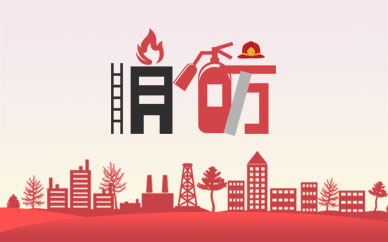
【新视野】自驾车从武汉到南海普陀山需要几个小时
2023-05-14
一、自驾车从武汉到南海普陀山需要几个小时 约977 4公里 13小时42分钟(还要看个人的驾驶习惯)汉口站南广场
-

看点:绥化市哪的自助烤肉好吃?多推荐几个!
2023-05-14
说实话,街头暗号真不咋地,个人认为鑫福自助还不错,肉比较新鲜;紫铜烤肉自助肉就不怎么好,这些都是20每
-

【环球报资讯】我想问一下国庆时这几条线路适合自驾游
2023-05-14
在上半年,你是不是无数次计划出行,却因为各种事情一拖再拖?眼看十一快来了!这次不能再浪费假期了,趁早
-

登封少林寺门票多少钱?怎么收费的? 环球热推荐
2023-05-14
一、登封少林寺门票多少钱?怎么收费的?少林寺门票全价100元 人A 免费政策:儿童1 2米以下免票,对革命伤
-

种花家是什么意思_种花家是什么意思?-前沿资讯
2023-05-14
1、“花匠”一词来自国产动画片《那年那兔那些事儿》,其中中国家庭谐音成花匠,象征着我们伟大的中华民...
-

我们一起来编童话作文300字(热门20篇)
2023-05-14
我们一起来编童话作文300字第1篇有一只兔子叫达利,它什么都不知道。它与众不同,脚特别大,会爬树却不会打
-
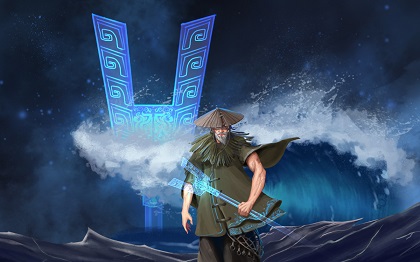
曼谷商贸城_对于曼谷商贸城简单介绍
2023-05-14
1、曼谷商贸城由星迈黎亚集团开发建设,占地面积33万㎡。2、位于泰国曼谷东部,曼谷市曼纳至春武里高速公路
-

捐款门
2023-05-14
1、2011年3月21日,娄底市第一中学组织家长捐款购置多媒体教学设备一事,播发相关报道,引发广泛关注。2、
-

葛莹(关于葛莹的简介)|今日热文
2023-05-13
大家好,葛莹,关于葛莹的简介很多人还不知道,现在让我们一起来看看吧!1、葛莹,女,1972年2月生,汉族,
-

意大利签证中心地址及联系方式-天天观天下
2023-05-13
意大利在欧洲乃至全球的军事、文化和外交事务中扮演着重要的角色,也因其拥有美丽的自然风光和为数众多的人
-
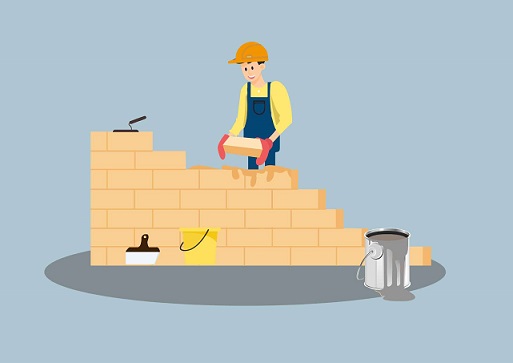
常州出发五天自驾游去嵊泗列岛外还可以玩浙江境内的哪些地方
2023-05-13
驾车路线:全程约346 6公里起点:溧阳市1 溧阳市内驾车方案1)从起点向正南方向出发,行驶80米,右转进入南
-

织阿尔巴尼亚针法(如何织阿尔巴尼亚针)|每日速讯
2023-05-13
一、织阿尔巴尼亚针法一:鞋底的钩织分步阅读毛线拖鞋小钩织一个毛线鞋底,鞋底的钩织参考下面的经验链接。
-

湘潭有哪些地方好玩.? 全球实时
2023-05-13
湘潭有哪些地方好玩 ?湘潭好玩点的地方在市区算及格广场和公园是休闲的好去处,但要晓得您到底是爱好哪一方
-

世界新资讯:3.4南山竹海人多吗
2023-05-13
3 4南山竹海人多吗3 4南山竹海人多。南山竹海风衫运碧景区是或举当地王牌景点,风景优美,适合孩子老人游玩
-
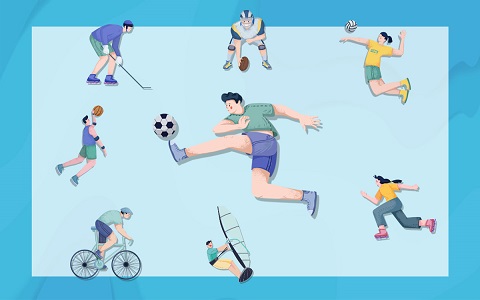
总冠军一步之遥!辽宁大胜浙江总比分3-0领先
2023-05-13
总冠军一步之遥!辽宁大胜浙江总比分3-0领先
冰岛 英文简介 聚焦

Iceland(Icelandic,Ísland),islandrepublic,intheNorthAtlanticOcean,about300km(about185mi)eastofGreenl
广告
X 关闭
全球消息!奥林巴斯是哪个国家品牌?什么是单反相机?
最近这段时间总有小伙伴问小编奥林巴斯是哪个国家品牌_奥林巴斯是哪个国家的品牌是什么,小编为此在网上...
观天下!军舰的排水量是什么意思?排水量怎么计算?
提起军舰的排水量是什么意思_排水量是什么意思大家在熟悉不过了,被越来越多的人所熟知,那你知道军舰的...
环球报道:联想v370笔记本综合测评?联想v370笔记本最新报价是多少?
提起联想z370cpu_lenovov370大家在熟悉不过了,被越来越多的人所熟知,那你知道联想z370cpu_lenovov370...
天天新消息丨微信新功能官方提醒怎么设置?如何使用微信的提醒功能?
(资料图片仅供参考)最近这段时间总有小伙伴问小编微信新功能官方提醒怎么设置_微信新功能官方提醒怎么玩...
当前报道:华为荣耀X1有哪些配置参数?华为荣耀x1标配是什么?
(资料图片)在生活中,很多人都不知道华为荣耀x10max_华为荣耀x1是什么意思,其实他的意思是非常简单的,...
全球今日讯!怎么选择适合自己的笔记本?实惠笔记本有哪些推荐?
最近小编看到大家都在讨论电脑啥牌子的好价格又实惠笔记本_实惠笔记本相关的事情,对此呢小编也是非常的...
焦点简讯:胸部怎么按摩健康(胸部怎么变大)
您好,现在渔夫来为大家解答以上的问题。胸部怎么按摩健康,胸部怎么变大相信很多小伙伴还不知道,现在让...
天天快看点丨挑战不可能第四季免费观看(挑战不可能第四季最新)
(相关资料图)您好,现在渔夫来为大家解答以上的问题。挑战不可能第四季免费观看,挑战不可能第四季最新相...
全球观焦点:爱亲者不敢恶于人敬亲者不敢慢于人(爱亲者不敢恶于人敬亲者不敢慢于人)
【资料图】您好,现在渔夫来为大家解答以上的问题。爱亲者不敢恶于人敬亲者不敢慢于人,爱亲者不敢恶于人...
消息!美年体检报告查询(美年体检报告查询)
(相关资料图)您好,现在渔夫来为大家解答以上的问题。美年体检报告查询,美年体检报告查询相信很多小伙伴...
广告
X 关闭
倒计时!国内新能源汽车行业或将进入“无补贴时代”
一个月之后,国内新能源汽车行业有可能进入无补贴时代。根据工信部、财政部、科技部和发展改革委联合发...

